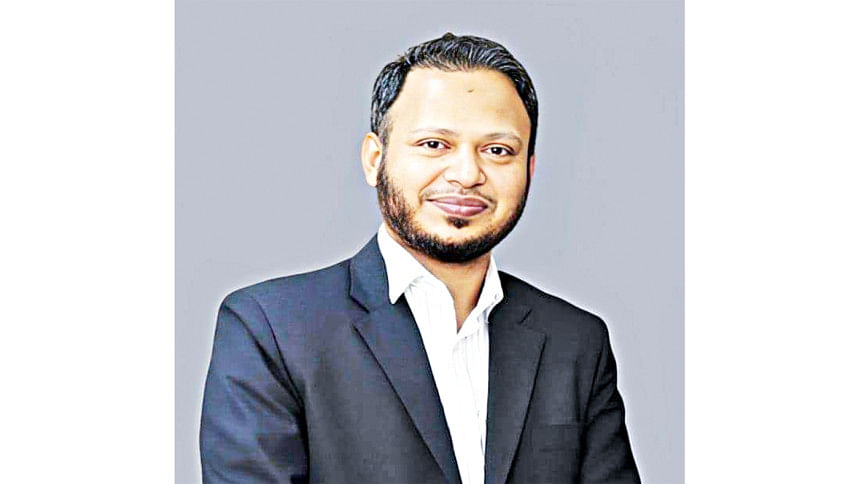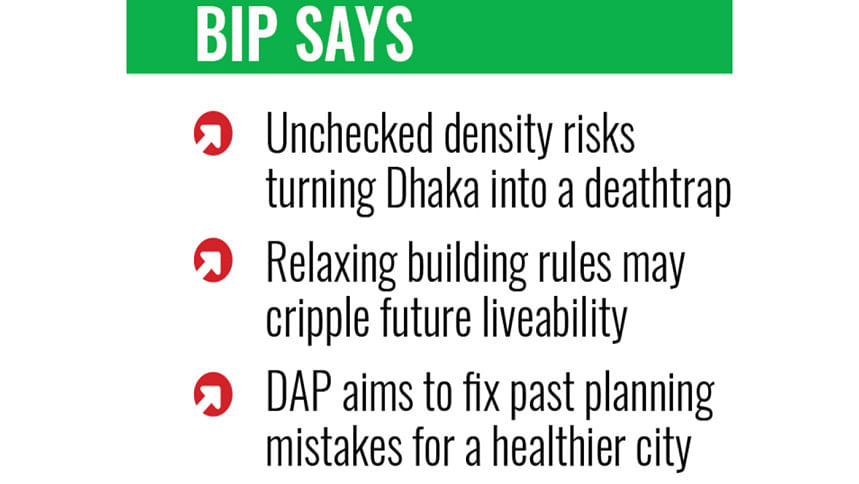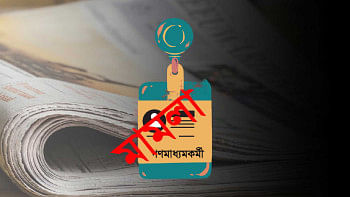Unchecked growth not an option: BIP

The Detailed Area Plan (DAP) aims to strike a balance between development and sustainability of Dhaka, according to the Bangladesh Institute of Planners (BIP), as it says relaxing DAP guidelines to favour real estate interests would cause long-term consequences to the liveability of the megacity.
"The new DAP introduces area-based population density norms for the first time in Dhaka's history, which is essential for sustainable city planning," said BIP President Adil Mohammed Khan. "We cannot afford to let Dhaka grow unchecked any longer."
A key component of the plan is the regulation of the floor area ratio (FAR) -- the ratio of a building's total floor area to the size of the plot on which it stands.
The DAP 2022 introduces a varying FAR system from the city centre to peripheral areas based on the level of urban area as well as infrastructure, services and utility capacities of particular areas to control density and infrastructure strain.
But developers have pushed back, seeking to raise the FAR limits and revert to a uniform, plot-based system.
Such a move, Khan warns, would be disastrous.

"For example, the FAR in areas like Badda could increase from 2 to 3.4 and dwelling units per katha could increase from 1.6 to 3," Khan explained.
"That means the number of families on a two-katha (1,440 sqft) plot could double from three to six. Multiply that across hundreds of neighbourhoods, and you're looking at density levels exceeding 50,000 people per square kilometre -- well beyond what any liveable megacity should sustain."
He added that high population density not only affects comfort and convenience, but it also directly impacts safety and liveability. Many neighbourhoods in Dhaka already suffer from narrow lanes and unplanned construction. With increased density and relaxed building rules, these areas risk becoming fire hazards.
"We're seeing more cases where fire cars can't enter alleys during emergencies because the lanes are too narrow and congested," Khan said. "If we allow indiscriminate high-rise construction in these same neighbourhoods, we will make the situation worse. In a fire accident, response delays can cost lives."
According to Khan, this loss of accessibility for emergency services -- especially the fire department -- is one of the most critical dangers of poorly planned urban expansion. The consequences are not hypothetical; recent fire incidents in the capital have exposed how fatal it can be when infrastructure is ignored in favour of vertical growth.
The DAP 2022 differs significantly from its predecessor, the 2008 plan. The earlier version prioritised rapid development and was more lenient with FAR values and construction permissions.
In contrast, the updated DAP aims to strike a balance between development and sustainability, emphasising green spaces, improved infrastructure, and population control.
"We are trying to correct the mistakes of the past," Khan said. "The 2008 DAP allowed fast growth but overlooked critical issues like traffic congestion, pollution, and emergency access. This time, we want to build a city that can breathe."
"Developers may see a dip in profits initially, but these policies are necessary for the city's long-term survival," said the BIP president.
"We are not against development, we're against uncontrolled, unsafe, and unsustainable development."
He also stressed that the government is open to reviewing certain parts of the DAP to make it more viable, but not at the cost of the city's liveability and safety.
"We are willing to engage in discussions. But the core objective must remain intact to protect the future of Dhaka."
"Dhaka's growth is inevitable," Khan said. "But it must be managed. We must choose between chaotic expansion and thoughtful development. The DAP is our opportunity to make that choice."

 For all latest news, follow The Daily Star's Google News channel.
For all latest news, follow The Daily Star's Google News channel. 



Comments